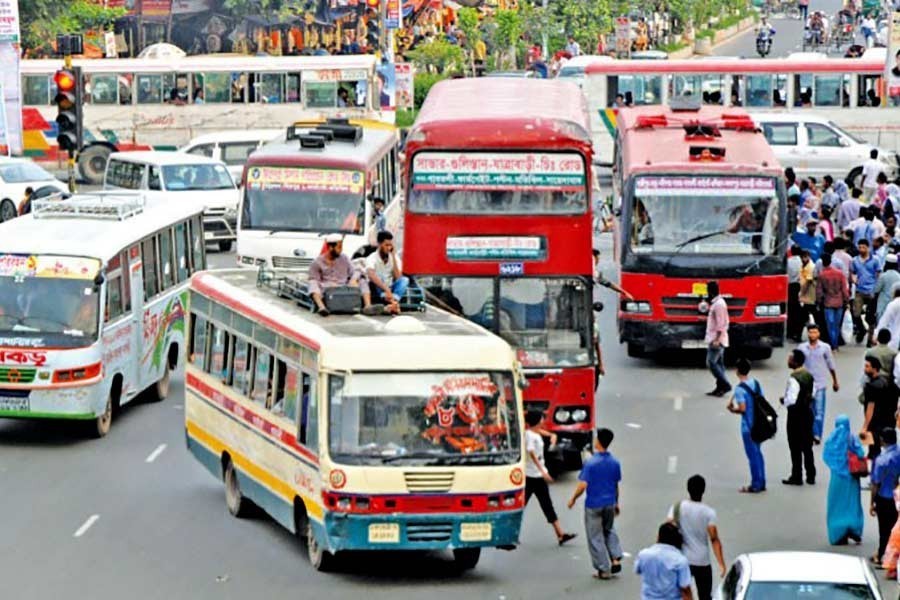In a country notorious for frequent road accident fatalities caused by reckless driving, the news about the public transport workers suffering from poor eyesight comes as a much-needed eye-opener. Chaotic vehicular movement results mainly from lax enforcement of traffic rules, administrative sloth and operation-related irregularities. But any city having the semblance of an orderly traffic set-up and still dominated by drivers with poor eyesight appears to be paradoxical. Adding to Dhaka's long stained image related to traffic movement, this has made the city candidate for another infamy. According to a survey conducted as part of an eye camp in the city's Sayedabad Bus Terminal Area it has been revealed that poor eyesight afflicts nearly 50 per cent of public transport workers. That bus drivers, assistants and their helpers comprise a large section of them is implied.
According to a media report, the survey was conducted by Brac Road Safety Programme and Junior Chamber International (Dhaka West), with the number of respondents being 1,200 public transport workers. The survey was singularly focused on the vision problems of drivers and helpers. It's really sad that in numerous surveys on the flaws, deficiencies and deviant conducts by bus drivers and other staff, the area of poor eyesight remained untouched. The public transport movement experts kept harping on the staff's minimum education, their quality of training, experience etc sparking outcry on the part of a section of transport owners. They found the issue of minimum educational qualification of drivers to be virtually a non-issue. The imperative of operating buses and other transport by persons with sound eyesight thus got lost in the whirlpool of these disputes.
Although dodging the requirement is possible in this country, healthy vision is a prime condition in almost all the countries for getting a driving licence. There are numerous tests to determine if one has the eyesight good enough to enable him or her to sit on the drivers' seat. The Bangladesh Road Transport Authority (BRTA) is said to have a provision to check the aspiring drivers' eyesight. But little is known about its implementation. Meanwhile, the survey has focused on the vision impairment of the drivers and transport helpers, with 76 per cent requiring spectacles and medications. On the other hand, 12.60 per cent need surgery. As a finding of the survey-cum-eye camp has shown, 29 per cent of the participants are aged between 31 and 40; 27 per cent between 40 and 50; and 19 per cent between 51 and 60. The account shows relatively a large part of the younger bus staff being the victims of poor vision.
Ironically, it is the drivers and assistants of these age groups who are normally seen involved in fatal bus accidents. The survey has come up with a vital piece of information: 96 per cent of the respondents are aware of their eye problems. At the same time, 87 per cent of the afflicted staff members are eager to pay for remedial measures. The survey has brought a critical hazard facing the public transport sector to the fore. One hopes the BRTA will not miss the rationale to make use of its administrative capacity in this regard. For the transport owners' part, they should extend all types of help to their employees having vision problems as a serious road safety concern.


